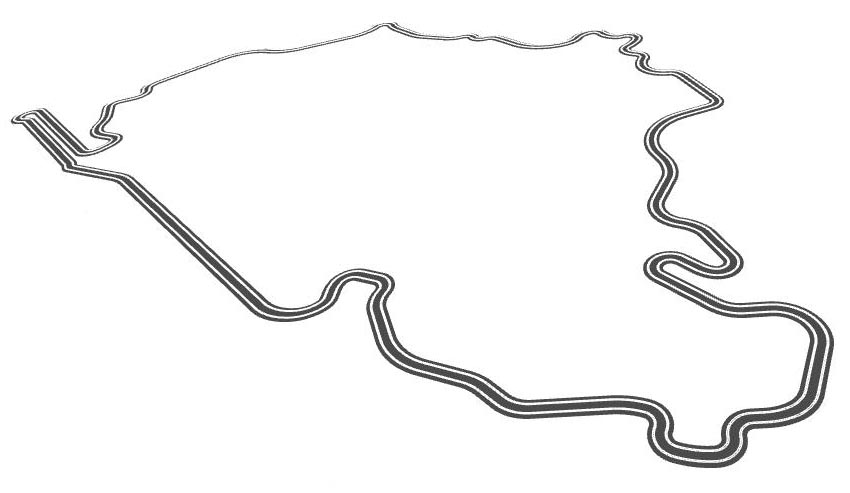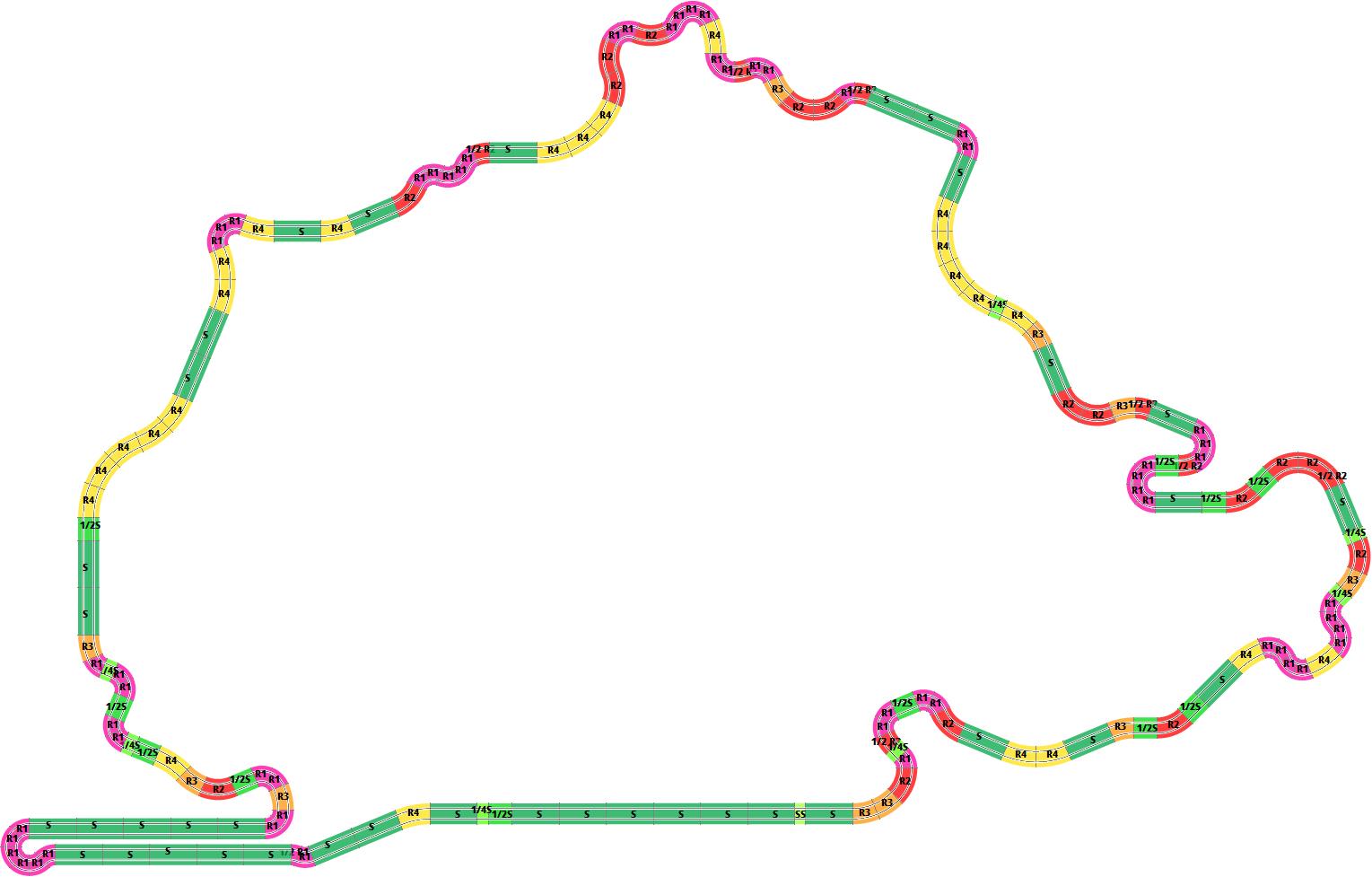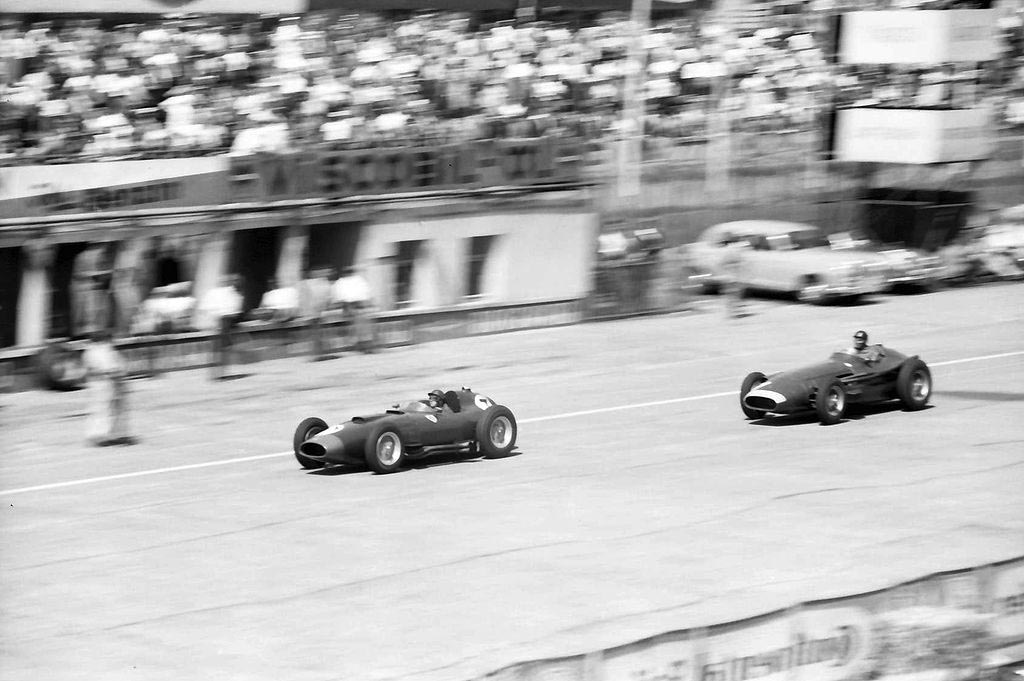
Nürburgring 1957
Juan Manuel Fangio was one of the best racing drivers of all time, and undoubtedly the best of his era, winning nearly half of all the F1 races he entered, a record which has never been matched. By 1957 he had won the F1 world championship four times already, driving for Alfa Romeo, Mercedes, and Ferrari.
For 1957 Fangio returned to Maserati to drive the renowned and elegant 250F. The season consisted of eight races, though it was effectively seven, as the Indianapolis race was not run to Formula One rules, so none of the teams actually raced in America.
Fangio took victories in Argentina, Monaco and France to lead the world championship. Stirling Moss then won the British Grand Prix, claiming the first world championship victory for a British car.
Race six of the season was the German Grand Prix at Nürburgring, where Fangio produced one of his best ever drives, and one which is often cited as one of the greatest victories in racing history.
SCX-5196 Nürburgring




| C8204 | R3 | x10 |
| C8205 | S | x37 |
| C8202 | R1 | x57 |
| C8200 | 1/4S | x7 |
| C8236 | SS | x1 |
| C8235 | R4 | x24 |
| C8234 | 1/2 R2 | x7 |
| C8206 | R2 | x16 |
| C8278 | 1/2 R1 | x1 |
| C8207 | 1/2S | x11 |
Nürburgring Nordschleife
The fearsome Nürburgring track was built in the 1920s around the village and medieval castle of Nürburg in the Eifel mountains. The "Green Hell" as it was nicknamed by Jackie Stewart, was a huge 20.8 km long circuit with an elevation change of over 300 metres.
Originally, the track featured four configurations: the 28.26 km (17.56 mi)-long Gesamtstrecke (Whole Course), which in turn consisted of the 22.81 km (14.17 mi) Nordschleife (North Loop) which is featured here, and the 7.75 km (4.81 mi) Südschleife (South Loop). There was also a 2.28 km (1.42 mi) warm-up loop called Zielschleife (Finish Loop) or Betonschleife (Concrete Loop), around the pit area.
Unlike Jackie Stewart, Fangio liked the circuit, saying "Nürburgring was my favourite track. I fell totally in love with it."
German GP
Fangio arrived at the infamous Nürburgring Nordschleife for the 1957 German Grand Prix with a chance to claim a fifth World Championship, and things looked promising initially as he qualified on pole.
Mike Hawthorn and Peter Collins set the initial pace for Ferrari, but Fangio, on softer Pirelli tyres took the lead on lap three. Unlike the Ferrari team, Maserati had decided to make a pit stop during the race, so Fangio pushed hard to build a gap, and set several lap records in the process. Fangio took his pit stop on lap 13, in first place, and 30 seconds ahead of Hawthorn and Collins, which should have been enough to maintain his lead.
But the pit stop was a complete disaster. The mechanic removing the left rear wheel couldn't find the wheel nut which he'd accidentally allowed to roll under the car unnoticed. Fangio eventually left the pits a full 48 seconds behind Collins in second place.

Fangio's Finest
Fangio was well known for not pushing himself or his car harder than he had to, but this time there was no choice if he wanted to win the race, and the championship.
Over ten laps of the Nürburgring track the Argentine broke his own lap record nine times over in an incredible stint of driving. As a measure of his sheer pace, his fastest lap was 8.2 seconds faster than his pole position qualifying lap, and over 24 seconds faster than the lap record from the previous year. Neither Hawthorn nor Collins could get within 10 seconds of his time. He didn't just chip away at the Ferrari's lead, he carved huge chunks out of it.
He caught and passed the two Ferraris on lap 21, and three and a half hours after the race had started, Fangio took the chequered flag to claim victory, 3.6 seconds ahead of Hawthorn. He also won his fifth world championship, and a fourth in a row.
It was Fangio's finest victory, and it was also his last, as he retired at the end of the season, just two races later.
His record stands for itself, and the Formula One records he still holds to this day are the highest percentage of wins (46.15%), highest percentage of pole positions (55.8%), highest percentage of front row starts (92.31%), oldest world champion (46), and world championships with the most teams (4).
In his own words
Excerpt from an Adam Cooper interview with Fangio
"That day I had everything turned on and firing on all cylinders. I was ready to do anything. Whichever way you look at it, it was an extraordinary race. When it was all over I was convinced that I would never be able to drive like that again – never. I had reached the limit of my concentration and will to win. Those were the two things that allowed me to take the risks I did that day. I knew I could win, but I knew equally I could lose. I was stretching myself to the limit, and afterwards the car was covered with grass and dirt. I was trying out new things, pushing myself further at many blind spots where I had never before had the courage to go to the limit. I was never a daredevil, never a spectacular driver. I would try to win as slowly as possible."
"Until that race I had never demanded more of myself or the cars. But that day I made such demands on myself that I couldn’t sleep for two nights afterwards. I was in such a state that whenever I shut my eyes it was as if I were in the race again, making those leaps in the dark on those curves where I had never before had the courage to push things so far. For two days I experienced delayed-action apprehension at what I had done, a feeling that had never come over me after any other race, a feeling that still returns to me this day when I think about that time. I had never driven as I drove then, but I also knew I’d never be able to go so fast again – ever."
